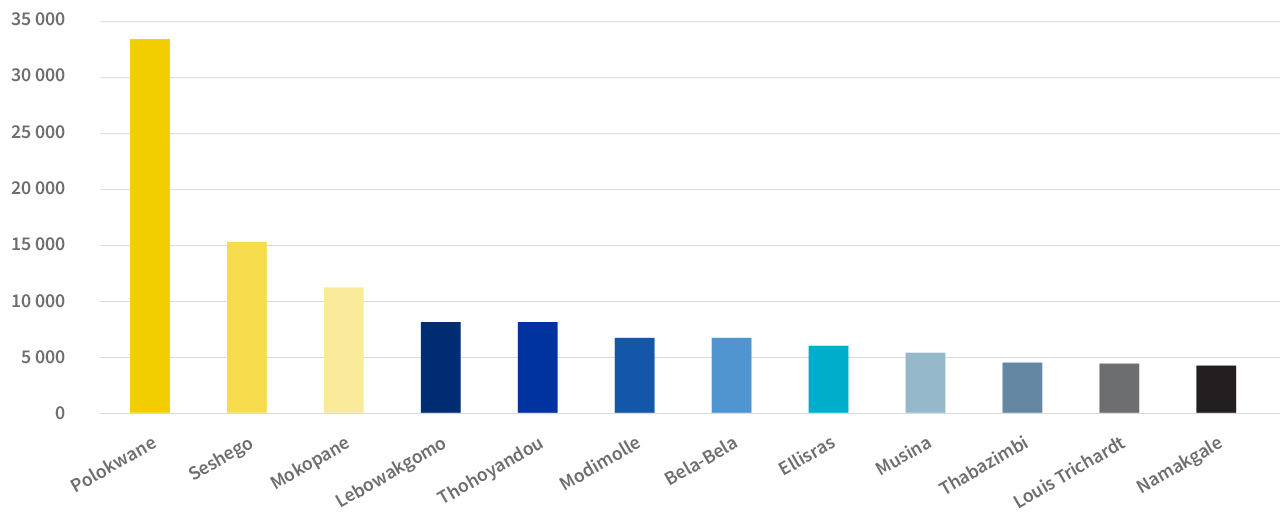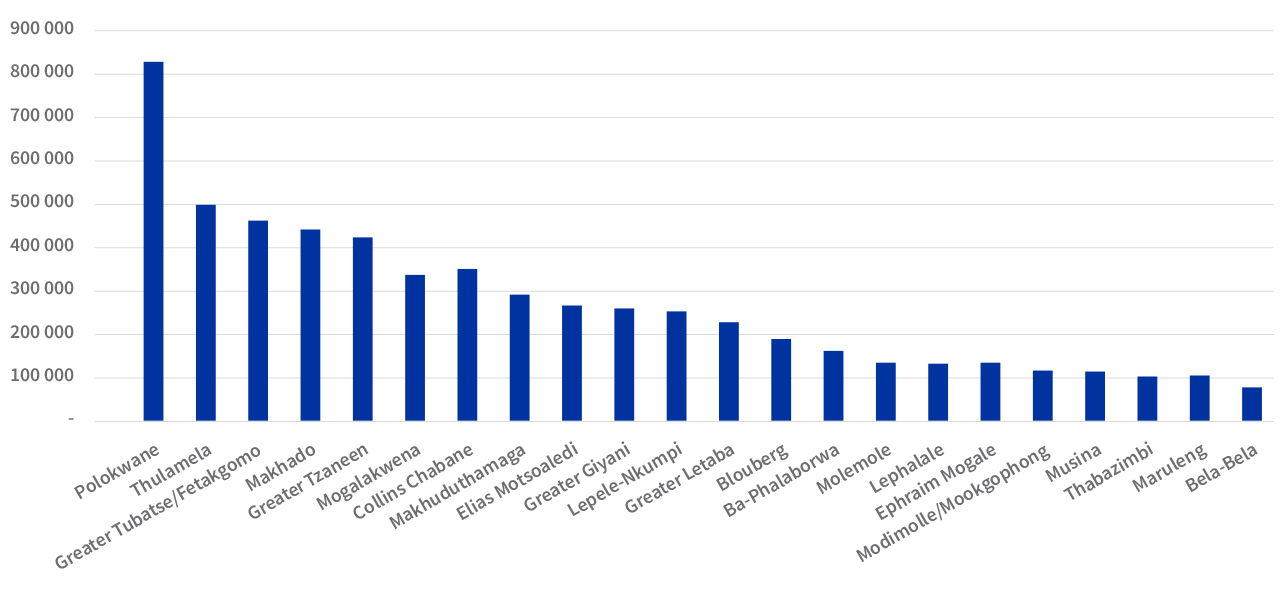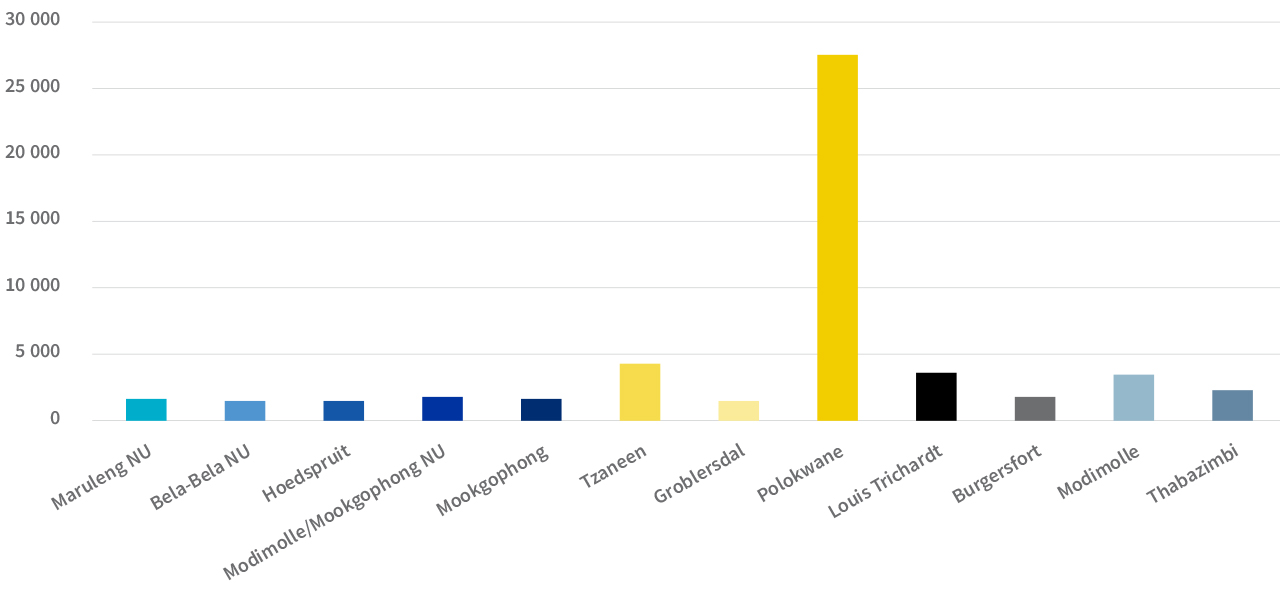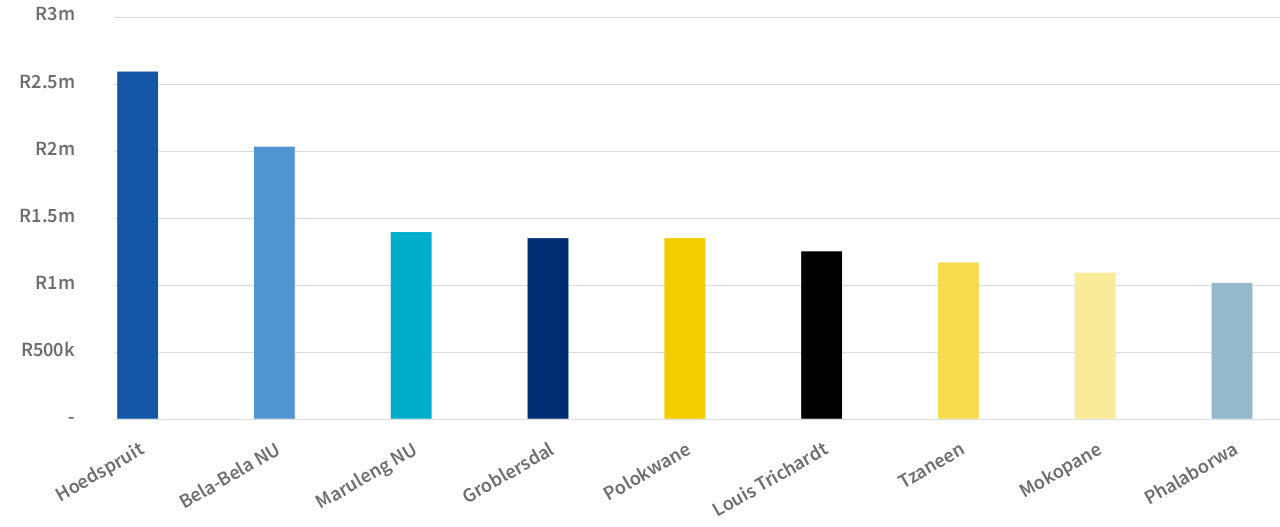Property Newsletter | October 2023
Registered property drought in Limpopo
Limpopo’s 6.2 million people make up 10% of South Africa’s population, but the province has the unfortunate distinction of having the most people (85% of the province) in the country who do not have access to properties registered at the Deeds Office.
Three quarters of Limpopo’s population live in non-urban areas which helps explain the low “formalisation factor” of 15%.
Limpopo is the country’s northern most province, and borders Botswana, Zimbabwe and Mozambique. While mining and eco-tourism are key parts of its economy, Limpopo’s population growth over the last 10 years – at 10% - is well under the national average of 17%, suggesting many people are moving away to other provinces in search of work.
There are 240 000 residential properties registered at the Deeds Office, with the vast majority being in Polokwane, Seshego and Mokopane (see graph below). However, it is worth noting that many “formal houses” have been built in rural areas over the last few years which are not recorded in the Deeds Office and form part of an informal economy which is difficult to record and measure.
Towns with the most deed registered properties

Polokwane is the province’s largest municipality, housing 14% of the population and 23% of Limpopo’s properties. Some 3% of the province’s population and 15% of the properties are in Polokwane the town as opposed to the municipality.
The balance of the population (11%) and properties (8%) are to be found in non-urban areas such as Mankweng and Seshego, although the latter does have formalised deeds registered properties within its boundaries (see graph below).
Population spread across municipalities

Property values and sales
Some 100 000 properties (42%) of the formally registered properties in the province are valued at over R500 000 – and the vast majority are in Polokwane (27 543), followed by Tzaneen (4 155) and Modimolle (3 360).
Top 12 towns: properties exceeding R500k in value

Property sales in Limpopo have been improving, with the average selling price this year 53% higher than 2013, compared to a 34% increase in Gauteng over the same period. Similarly, sales volumes have grown by 12% between 2013 and 2022, compared to just 2% in Gauteng.
The top 12 towns account for 80% of the sales transactions (4 050) (see graph below) in the last year, with Polokwane accounting for 30%.
Residential property sales volume per town

While Polokwane is the most densely populated in terms of registered properties, it lags when it comes to average value of properties. Leading Limpopo’s value table is Maruleng NU, where the average value of properties tops R3.1m, with Bela-Bela NU and Hoedspruit next on R3m. The high values in the three towns is driven by Estate sales.
Polokwane’s average value is just under R1.4m, just behind Groblersdal and above Louis Trichardt.
Towns with average property stock value above R500k

Towns with more than 50 sales where the average sales values exceeded R1m

When it comes to the highest average sales values per town over the last 12 months, Hoedspruit, Bela Bela NU and Maruleng NU lead the way and the higher average sales are driven by Estates. Some of the major Estates in the area are:
| Town | Estate | Sales |
|---|---|---|
| Moditlo Estate | 71 | |
| Zandspruit Bush and Aero Estate | 39 | |
| Elephant Rock Eco Estate | 25 | |
| Blyde Wildlife Estate | 25 | |
| Maruleng NU | Escarpia | 11 |
| Leopard Rock Wildlife Estate | 7 | |
| Wild Rivers Nature Reserve | 6 | |
| Blyde River Canyon Lodge | 5 | |
| Canyon Game Reserve | 3 | |
| Raptors View Wildlife Estate | 37 | |
| Hoedspruit | Hoedspruit Wildlife Estate | 31 |
| Raptors Wildlife Estate | 1 | |
| Raptors View Wildlife Estate | 37 | |
| Bela-Bela NU | Hoedspruit Wildlife Estate | 31 |
| Raptors Wildlife Estate | 1 |
Total population of South Africa in 2022, by province (in 1 000s)


.png)
.png)
.png)
.png)